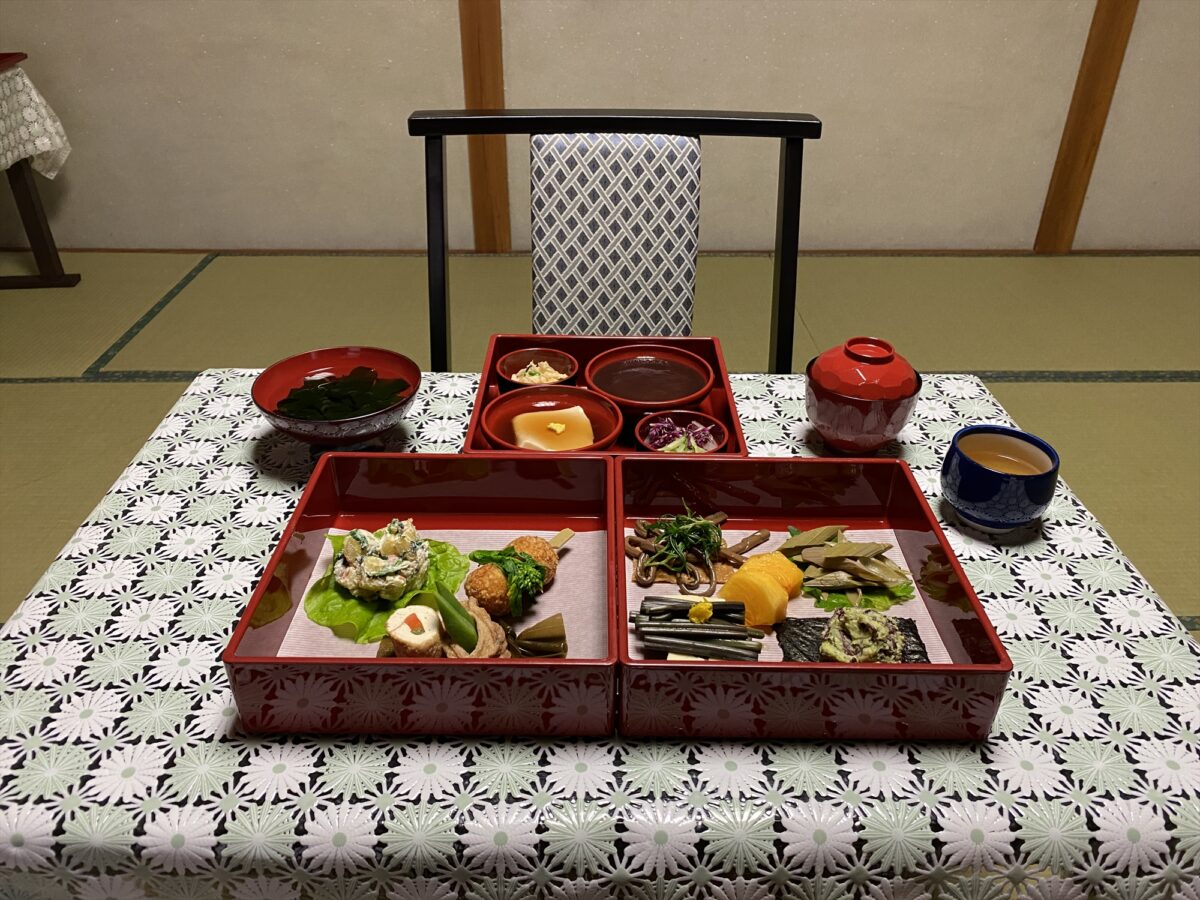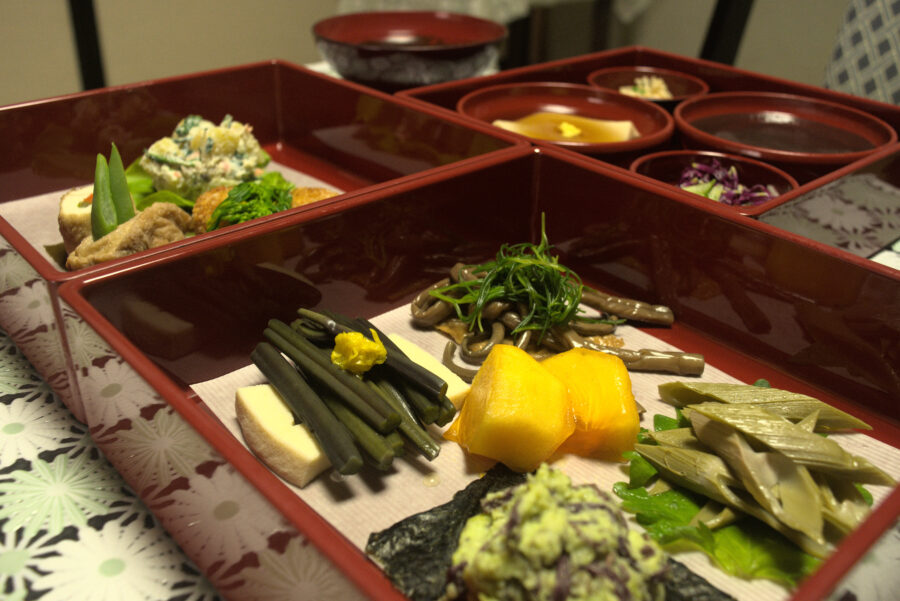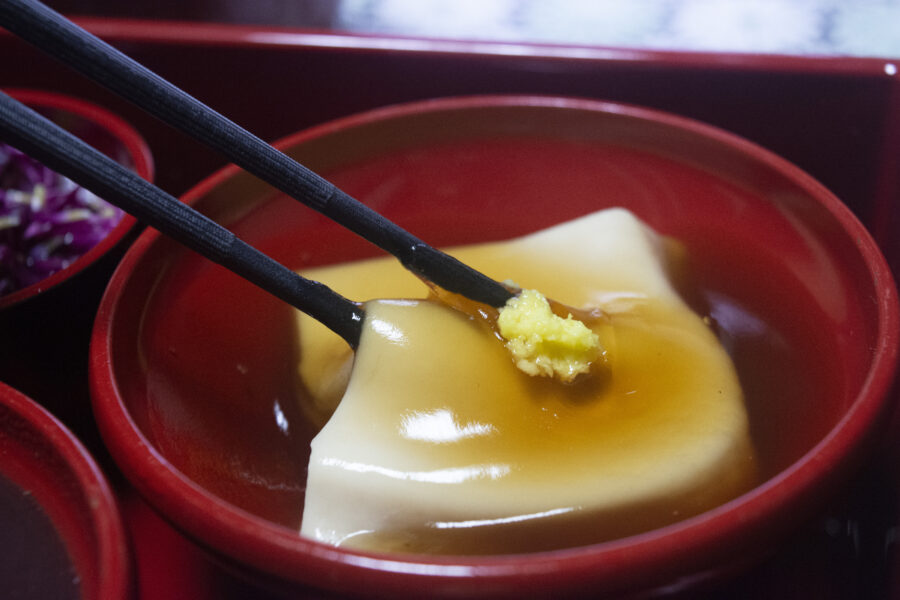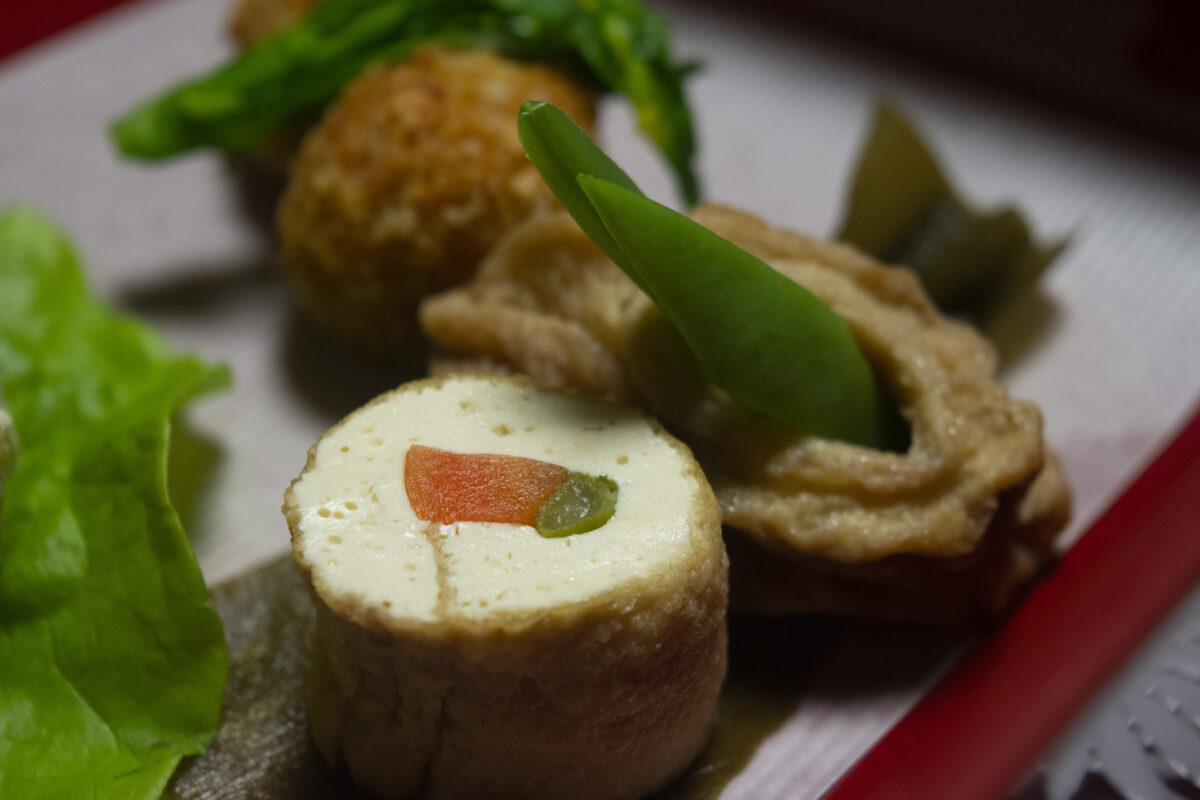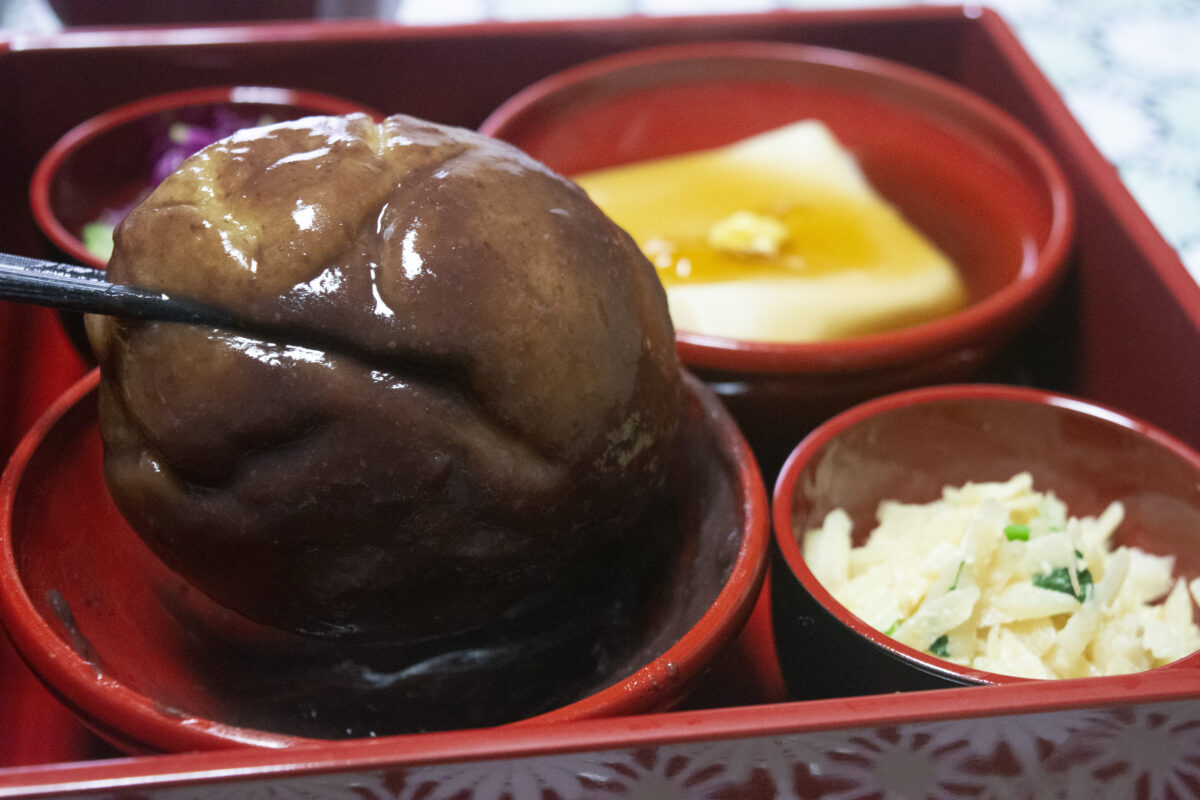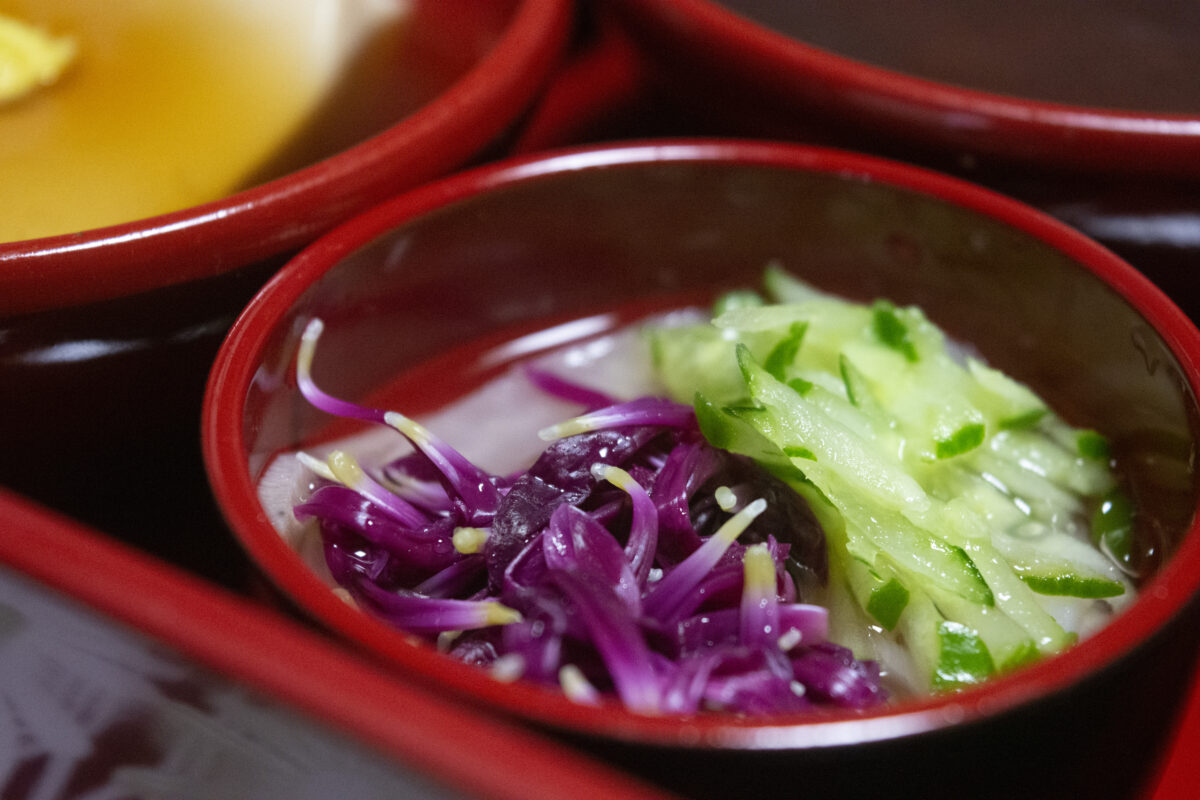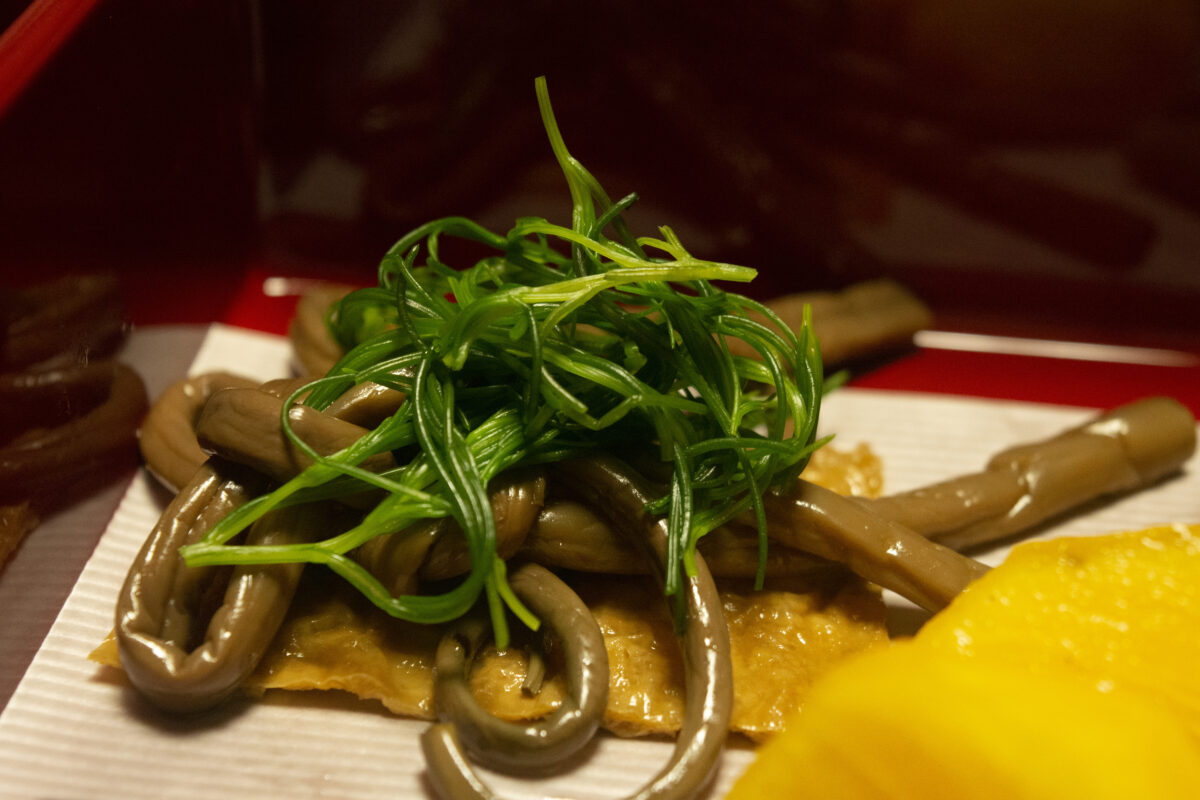In the snow country of northern Japan, deep in the mountains of Yamagata Prefecture lies the Dewa Sanzan—one of the three holiest areas of the Tohoku region. The Dewa Sanzan is the birthplace of Shugen Shudan, a religion which originated some time during the Heian era (974–1192 CE). Neither Shinto nor Buddhist, Shugen Shudan incorporates aspects of both into its own syncretic teachings, known as Shugendo. Practitioners of Shugendo are called yamabushi. One element Shugen Shudan shares with Buddhism is the culinary tradition of shojin ryori, vegan cuisine eaten during periods of religious purification and training, by yamabushi and monks alike.
The unique type of shojin ryori served in the Dewa Sanzan area has come to be known as Dewa Sanzan shojin ryori. Unlike the shojin ryori of famous Buddhist areas like Kyoto and Koyasan, which tend to rely on tofu and cultivated vegetables, Dewa Sanzan shojin ryori is based on sansai—exquisite mountain vegetables that grow wild on the slopes of these holy mountains.
Though every Dewa Sanzan chef and local has their own special preparation methods and recipes, there are some dishes you can expect to be served as part of almost any shojin ryori meal here. Gomadofu (sesame tofu) is a staple of shojin ryori cuisine throughout Japan. The gomadofu of Dewa Sanzan is unique in that it is handmade, and has a more unctuous, gooey texture than that of the gomadofu of other regions. Another protein-rich dish unique to the Dewa Sanzan area is maki aburage, vegetables wrapped in a sheet of deep-fried tofu and simmered until tender. Tochi mochi is a crowd pleaser—chewy mochi rice cakes smothered in anko sweet bean jam. Mochi is a well-known Japanese confection but incorporating expensive and difficult-to-prepare tochi (Japanese horse chestnut) into the dough gives this mochi a uniquely nutty flavor and hearty texture. Tama konnyaku is a dish common throughout Yamagata Prefecture, for yamabushi and regular folk alike. It consists of firm rounds of konnyaku cake, a low-calorie food with a firm, slightly gelatinous texture, simmered in a savory broth.
The wild sansai that constitute the foundation of Dewa Sanzan shojin ryori cusine vary greatly with the seasons. In spring, you’ll find dishes that incorporate the buds of wild plants just awakening from their winter dormancy, like bamboo shoots and fiddlehead ferns. Early summer brings more mature shoots and juicy aquatic plants like the marvelous junsai (watershield). Harvested from lakes fed by icy snowmelt, junsai leaves shimmer like jewels inside their crystal-clear gelatinous coating. In autumn, in addition to wild mushrooms, Dewa Sanzan shojin ryori also incorporates heirloom vegetables and legumes cultivated locally on a small scale, like sato imo tubers and dadacha mame beans. Year-round but especially in winter, numerous dishes are made with sansai preserved according to traditional methods. Because of the skillful and labor-intensive nature of these preservation methods, these ingredients are rare finds, often unheard of outside their foraging range except by sansai connoisseurs. They include plants like itadori (Japanese knotweed), edible flowers like chrysanthemum, and more varieties of fern than many realize are edible—zenmai (Asian royal fern) and warabi (bracken), among others.
